The details of the implementation of the vehicle trade-in program were announced on schedule. However, the reporter learned that the subsidy policy is not the same in the commercial vehicle and the family car market. The commercial vehicle market is hotly sought after, and the family car market is unresponsive. Commercial vehicle market is booming Recently, the reporter learned from the interview that since the implementation of the car trade-in policy, the commercial vehicle market has been booming. In order to compete with the commercial vehicle market, many businesses have also introduced a variety of commercial vehicle packages. The reporter learned from the 4S shop at Gio Microcars that the sales of Gio Micro's in the store were extremely hot. The reason why this situation has arisen is mainly due to the fact that manufacturers have used Dongfeng, a national old vehicle replacement policy, to launch a new micro-car replacement event with old micro-surfaces, which has attracted a large number of old-car customers to shop and purchase vehicles. At home car dealers to buy micro-surface addition to enjoy the country's car subsidy to the countryside, the business also joined hands with home appliance stores, launched a car to send home appliances activities. Numerous preferential measures have made the trade-in market for commercial vehicles extremely hot. The family car market is flat Compared with commercial vehicles, the family car market has responded flatly. The reporter learned from a number of old motor vehicle trading markets that since the implementation of the trade-in subsidies policy, there has been no surge in transaction volume. A car owner who is preparing to change cars said that the “yellow car†(high-emission vehicle) is the only car model that meets the “new-for-new†condition, but the small-displacement purchase tax incentive and the trade-in policy cannot be enjoyed at the same time. Consumers often choose Will choose easy-to-use small-displacement purchase tax incentives and give up the trade-in policy. Some car owners also stated that in the used car market, the transaction price of most cars can be sold for more than 20,000 yuan. If they are scrapped, they receive less subsidies and are not worthwhile. Song Linlin, deputy general manager of Yunda Motor Vehicle Trading Co., Ltd., said that in the used-car market, most car owners usually choose to sell cars instead of scrapping them. The subsidy policy has a limited effect on the encouragement of old-fashioned cars. Polymer Concrete Cells For ER/EW Processing Of Nonferrous
Long-term impermeability, free of corrosion, 20+ years warranty
The structural core of electrolytic cells is bolstered with sturdy external seismic reinforcement blocks confining its floor supports, and includes a robust, internal bidirectional, pultruded FRP bar mesh reinforcement which positively maintains integrity should the cell fail due to catastrophic events. Electrolytic cell installation protocols call for lateral wall collaboration between cells,thus reducing stress levels of cell around 40% under normal operating conditions.
Polymer Concrete Electrolytic Cell,Electrolytic Cell Nickle,Electrolytic Cell Nickle Refining Tanks,Electrolytic Cells of Electroplating Equipment Hebei aoliande Chemical Equipment Co., Ltd , https://www.aoliandepipes.com
View related topics: "new trade-in" stimulates the development of commercial vehicle market
Electrolytic cells are designed, built and installed to satisfy the most stringent requirements requested by tankhouse operators worldwide. In most cases their main request is to guarantee full operating availability throughout the plant's lifespan, maximizing production of high-purity metal (copper, zinc, nickel, cobalt, lead or other nonferrous metals) with absolute safety for people and the environment. Additionally, cells must accommodate changes for continuous improvement of the electrolytic process, integrating efficiently with upgrades of complementary equipment such as anodes, cathodes, cap, boards, overhead crane electrolyte agitation systems, acid mist control devices, thermal insulation among many others.
The Internal layer is a monolithic tank made with multiple layers of fiber-reinforced vinyl ester resin (FRP) complying with chemical barrier international norms that assure long-term impermeability and corrosion resistance.
The Intermediate layer is the structural core made with polymer Concrete, with a patented formulation to achieve a low coefficient of thermal expansion, providing long-term structural integrity with low thermally-induced stresses
The External layer is a standard seal layer of FRP that further protects the structural core from electrolyte splashes and spills. Optionally,this external seal may be specified with multi-layered oriented fiber reinforcements to guarantee trouble-free operation in unusually extreme operating environments.
Benefits of electrolytic cells
Our monolithic internal tank manufactured with multiple layers of fiber-reinforced premium vinyl ester resin. It has continuous service without leakage, free of corrosion and structural flaws which operating under normal conditions as specified for each project.
Swift, accurate and less costly installation
Electrolytic cells include features that allow reduction of 25% or more in time needed for cell erection, alignment and leveling compared to time required with conventional polymer concrete cells. Dimension tolerances for electrolytic cells are consistently tight, simplifying installation in the most demanding applications,including plants with automated crane systems.
Minimum cleaning time and water consumption
The rounded internal shape,optional sloped cell floors,and smooth,flat finish of the internal tank,facilitate water sweeping and drainage of heavy sludge,with reduced water usage and accelerating return to service after each cleaning.
Minimum maintenance cost
The robust, virtually impervious internal tank that is chemically bound to the polymer concrete structural core during molding is tolerant to operating abuse its smooth,non-stick surfaces minimize adhesion of contaminants.
Maximum operational safety
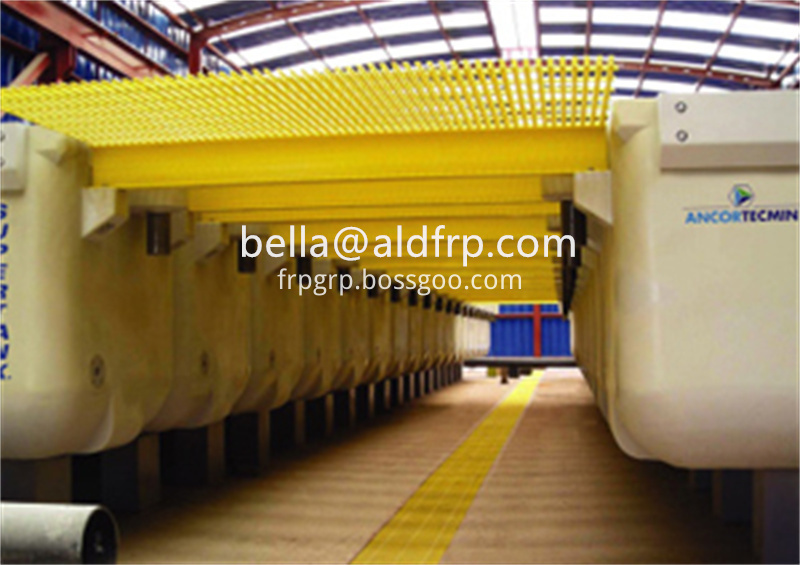
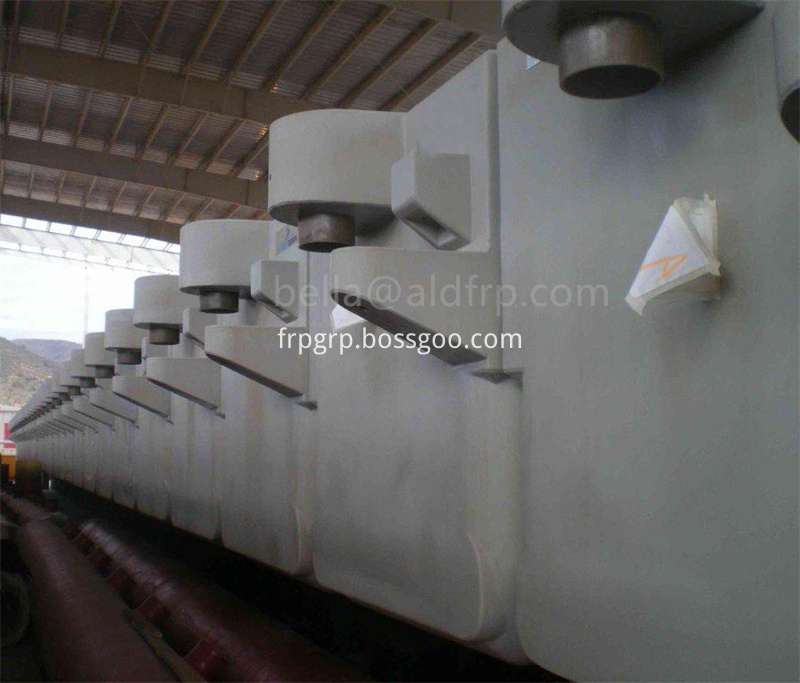
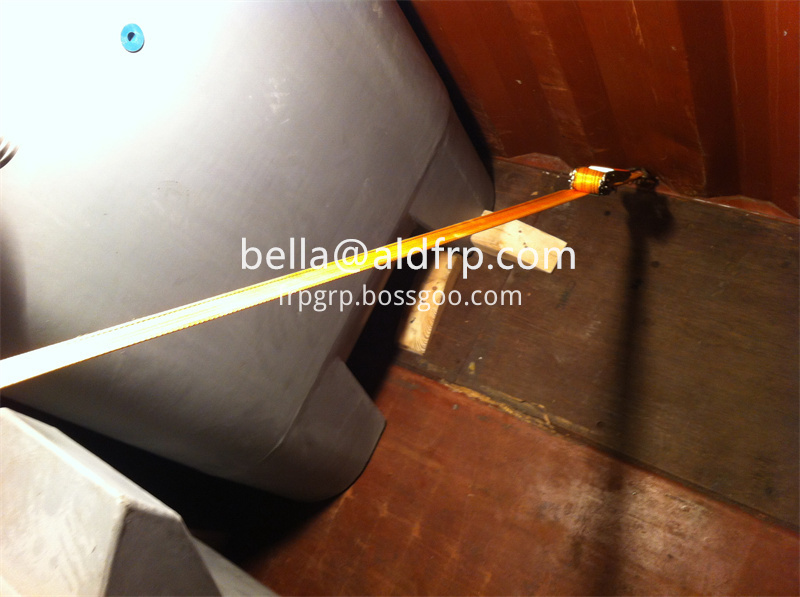
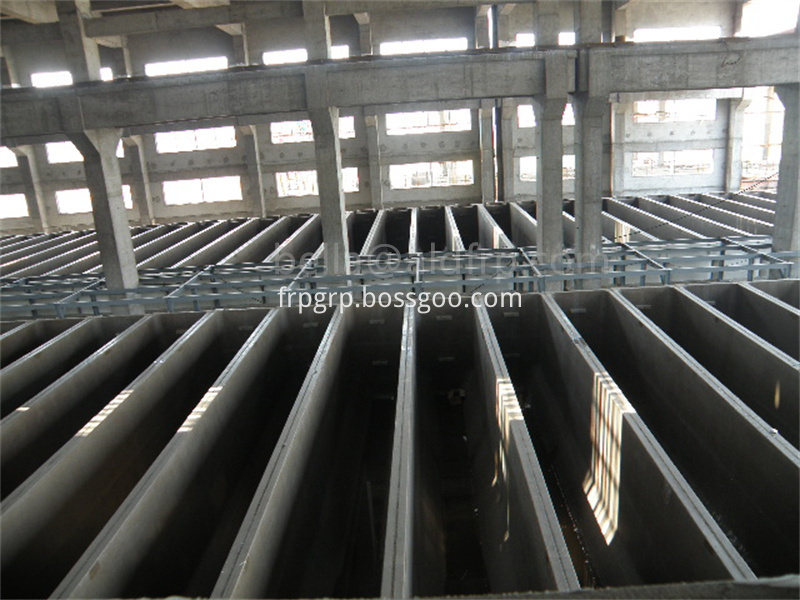
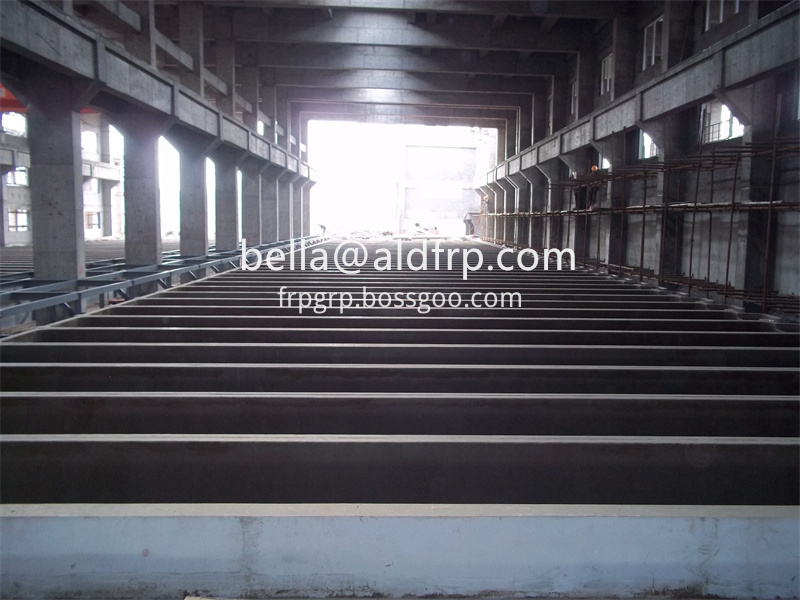
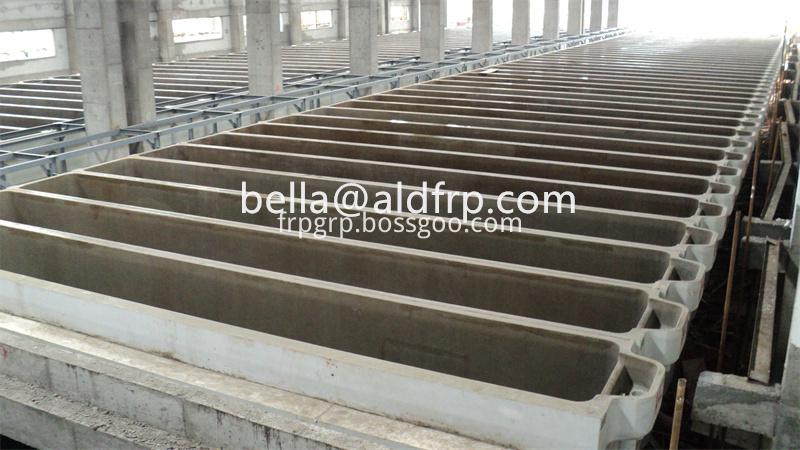
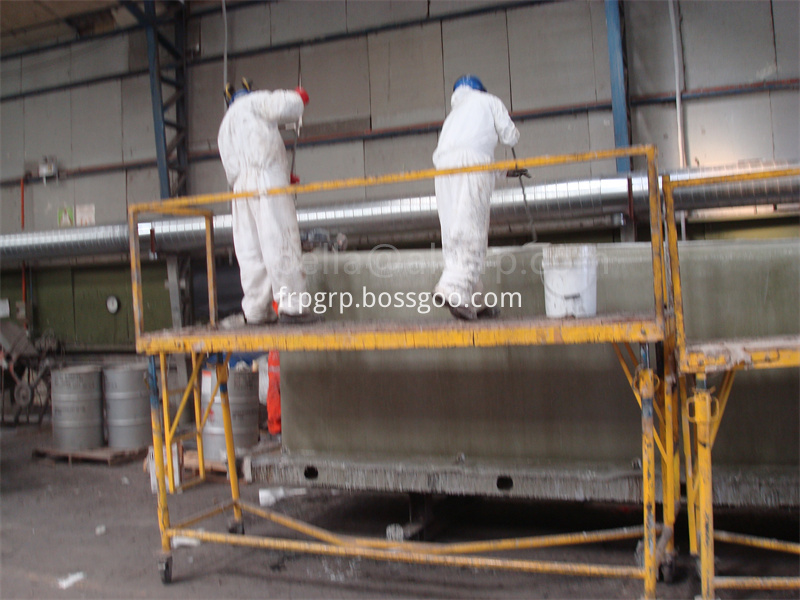
2. Structure
Electrolytic cells are cast monolithically based on a patented, three-layer composite material system: